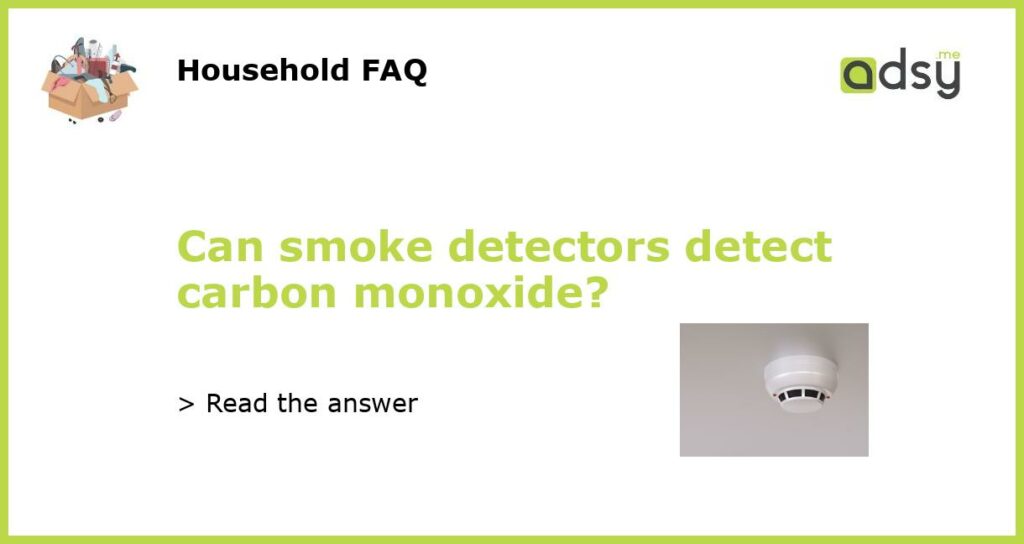Smoke Detectors vs Carbon Monoxide Detectors: What’s the Difference?
Smoke detectors and carbon monoxide detectors are both crucial safety devices that can save lives in the event of a fire or carbon monoxide leak. However, many people wonder if smoke detectors are capable of detecting carbon monoxide as well. In this article, we will explore the key differences between smoke detectors and carbon monoxide detectors and explain why it is important to have both in your home.
Understanding Smoke Detectors
Smoke detectors are primarily designed to alert occupants to the presence of smoke, indicating a potential fire. They contain sensors that can detect the airborne particles produced by combustion. When smoke particles enter the detector, they disrupt the flow of an electric current, triggering the alarm. Smoke detectors are typically equipped with audible alarms that sound when smoke is detected, alerting individuals to evacuate the building and call emergency services.
The Limitations of Smoke Detectors
While smoke detectors are highly effective at detecting smoke, they are not designed to detect carbon monoxide. Carbon monoxide (CO) is a colorless, odorless, and tasteless gas that is produced by the incomplete combustion of fossil fuels such as natural gas, gasoline, and wood. It can be extremely dangerous if inhaled in high concentrations, leading to carbon monoxide poisoning, which can be fatal.
The inability of smoke detectors to detect carbon monoxide is one of their significant limitations. Without a proper carbon monoxide detector in place, individuals may not be aware of a carbon monoxide leak until symptoms of poisoning occur or it is too late. This is why it is crucial to have both smoke detectors and carbon monoxide detectors installed in your home.
Carbon Monoxide Detectors
Carbon monoxide detectors are specially designed to detect the presence of carbon monoxide in the air. They work by sensing the levels of CO in the surrounding air and triggering an alarm when concentrations reach a dangerous level. Similar to smoke detectors, carbon monoxide detectors have audible alarms that sound when CO is detected, alerting occupants to the potential danger and prompting them to take necessary actions.
Carbon monoxide detectors use different technologies to detect CO, such as electrochemical sensors or biomimetic sensors. These sensors are highly sensitive to carbon monoxide and can detect even low levels of the gas. Some carbon monoxide detectors may also have additional features, such as digital displays that show the current CO levels, allowing users to monitor the situation more closely.
The Importance of Having Both Detectors
Smoke detectors and carbon monoxide detectors serve different purposes but are equally important for ensuring the safety of your home and family. While smoke detectors are crucial for detecting fires and alerting occupants to evacuate, carbon monoxide detectors are essential for detecting the presence of carbon monoxide gas, which can be life-threatening.
It is important to have both smoke detectors and carbon monoxide detectors installed in your home, ideally on every level and near sleeping areas. Regularly test and replace the batteries in these devices to ensure that they are functioning properly. Remember that smoke detectors may not be effective in detecting carbon monoxide, and relying solely on smoke detectors can put you at risk of carbon monoxide poisoning.
In conclusion, smoke detectors are not capable of directly detecting carbon monoxide. While they are exceptional at detecting smoke particles and indicating the presence of a fire, they cannot detect the dangerous gas produced by combustion. Therefore, it is crucial to have dedicated carbon monoxide detectors installed alongside your smoke detectors to keep your home and family safe from both fire and carbon monoxide poisoning.






